Having been in Europe for more than 2 years now, my perspectives on which places to visit have evolved over time. I started with the disposition that I should travel mostly to places within Italy; there's more time to explore everything else, I'd say. And so I went on exploring cities within my reach (Rome and Naples at first, and small towns in their vicinity). Then, I progressed to nailing various regions within Italy (Tuscany, Lombardy and, eventually, Veneto... Sicily has perpetually eluded me) until seeing every flavor of Baroque, Gothic and Romanesque church had me saying that I probably had enough of Italy (I learned loads though - the North-South divide, facts on the Unification, regional differences and flavors). Time to move on to other places... France, Spain, Belgium (by chance)... easy since I could speak passable Italian (some French from back in my undergrad days, some Spanish from being Filipino)... But then they all started feeling and melding together and sort of being the same.
Anyway, bottom line is that after 2 years of being here, I found it strange that the eastern most city I've been to is... Naples, not only my home base but a city that is as inherently "western European" as any other city I've been to. I decided that this fact had to change.
Of course, Eastern Europe is a big region in itself -- where do I start? While one could, ideally, do one big mega train trip by stringing together a handful of the big cities (Prague, Budapest and Vienna mostly come to mind) I had neither the opportunity nor the money to do that. It came down to picking one main city and maybe exploring some side cities around it (my normal strategy anyway) - wrestling between Budapest and Prague, I decided to go with the latter since most of my travel friends have been there and it seems to be the bigger star (the other, I defer to a later opportunity... little did I know that I'd be coaxed into doing that later this month as well). But I digress. So I went to skyscanner -- found the cheapest and most reasonable flight I could for this coming long weekend (Rome - Brno), mapped a tentative route leading to and from Prague (which gives me the chance to see 3 other cities: Brno, Olomouc, Karlovy Vary), did some research on Czech beer and gastronomy and called it a plan. | 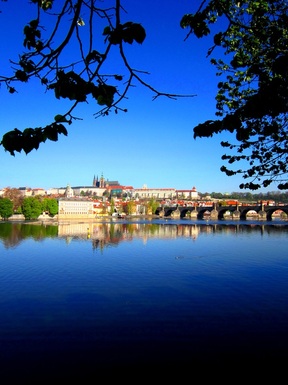 City by the river: Pražský hrad (Prague Castle) and Karlov most (Charles Bridge), Prague's main attractions by the Vltava river |
My journey started in the city of
Brno, the second city of the Czech republic. While sights of touristic interest are not as plentiful (at least with respect to Prague), the city contains a hidden gem or two -- not to mention possibly one of the better microbreweries in the Czech republic,
Pivovarsky Pegas, where I had my first pints of Czech beer (which will be featured in another post).
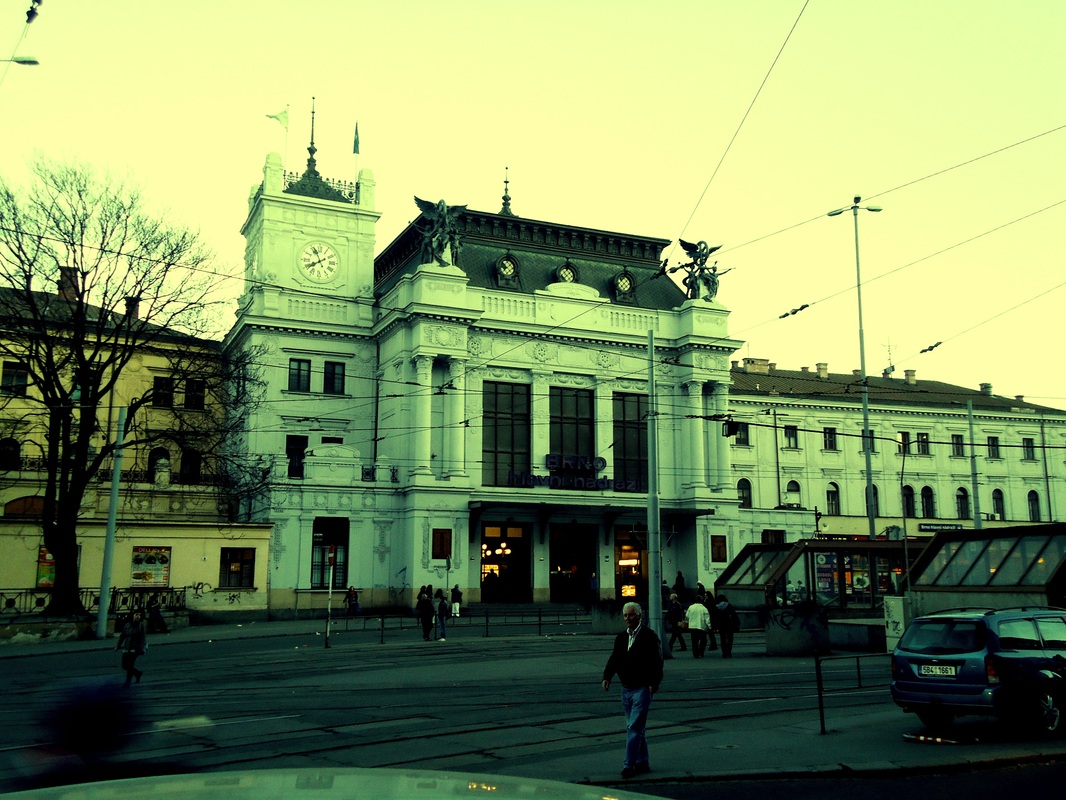 Hlavni nadrazi (Main rail station) of Brno |  Oroloj (Clock tower) near Zelny trh (the cabbage market) |  The Cathedral of St. Peter and Paul, originally Romanesque but modified with Gothic features |
After Brno, I took an early morning train to
Prague (
Praha), the Czech capital and possibly one the most visited cities in Europe (and the obvious highlight of every Czech republic trip). Compared to Brno, Praha overwhelms you both in terms of the sheer number sights and attractions to see and visit as well as in terms of the number of people as well (as is expected). Each turn in each quarter has something different to offer to the eye - architecture ranges from Baroque to Renaissance to Gothic to Art Noveau and ultra-modern. Even the personalities one would meet would vary from stiff and reserved to friendly to outright touristic (they're the ones who are out to get you).
There are two main areas of interests to tourists located on opposite banks of the Vltava river: The Old Town (
Staré Město) in the eastern bank and The Lesser Town (
Malá Strana) on the western bank. Two bridges allow access between the main parts of these two area:
Manesuv most and the more famous
Karlov most (Charles bridge), one of the most important symbols of the city.
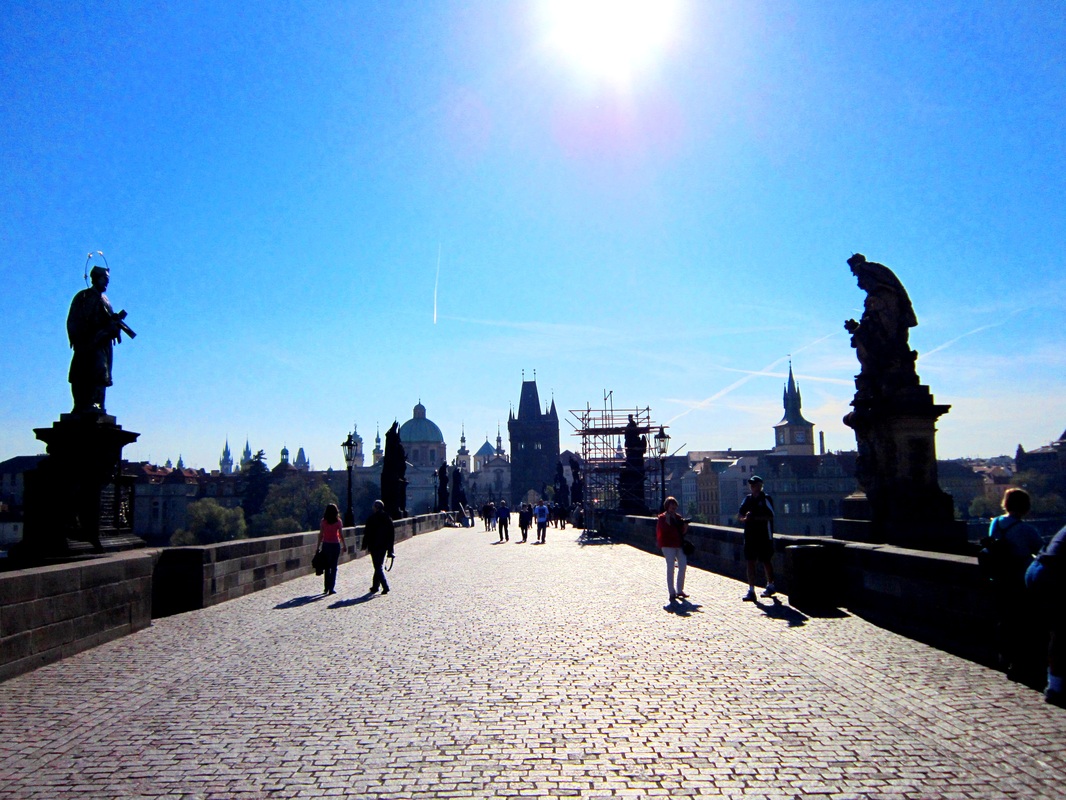 Walking along Karlov most (Charles bridge) towards Stare mestro (Old Town) in the early morning | 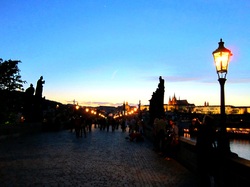 Walking along Karlov most (Charles bridge) towards the direction of Mala strana (Lesser town) at dusk |
At the Old Town, one's eyes would feast upon the various architectural styles represented in the city. Just the Old Town Square (Staroměstské náměstí) itself already showcases various styles - the pointy black-tipped Gothic towers that lord over the Prague skyline, Baroque churches, etc.
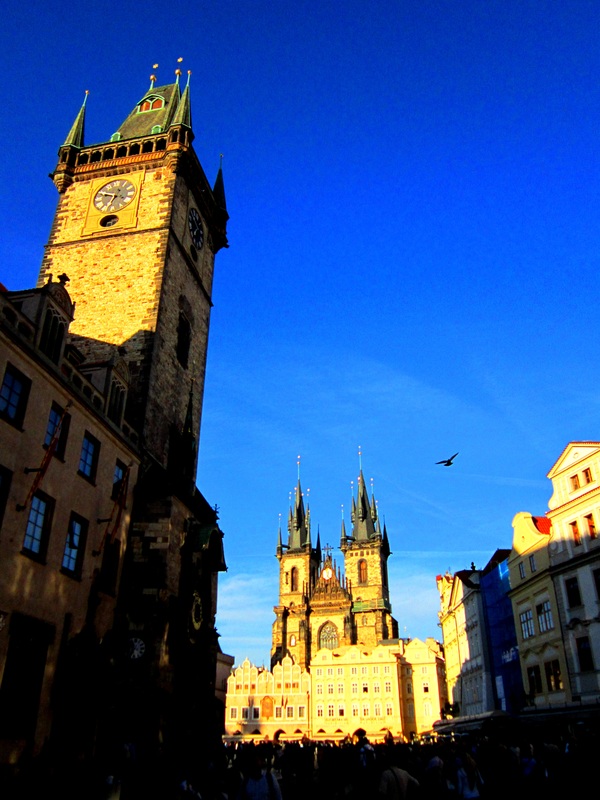 Two towering features of Staroměstské náměstí (Old Town Square) in Prague: Pražský orloj (Prague Astronomical Clock Tower) and Týnský chrám (Tyn Church) | 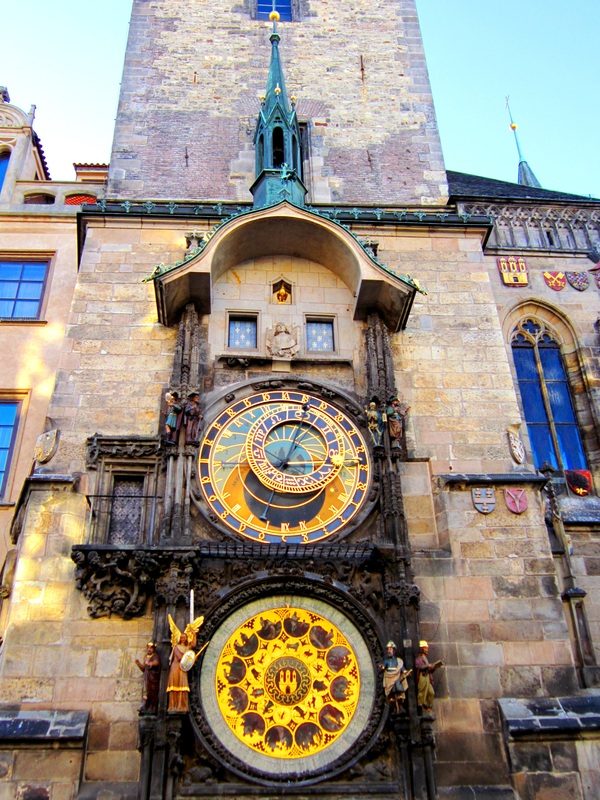 The medieval astronomical clock of Prague (Pražský orloj) located near the Old Town Hall, flocks gather underneath it at the start of each hour to see the display. | 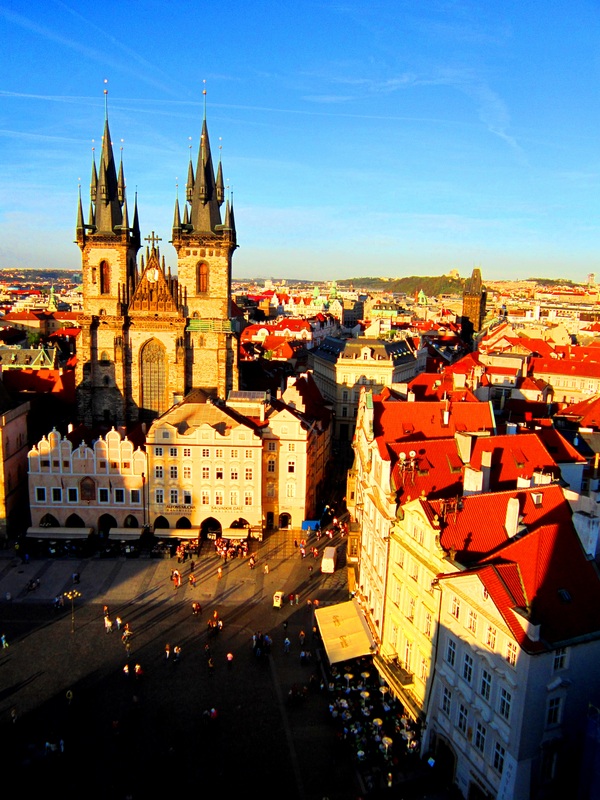 View of Týnský chrám (Church of Our Lady Before Tyn) from the Clock Tower, Old Town Square, Prague |
 St. Nicolas Church (Svaty Mikulas), a nice Baroque church at the northern side of the Old Town Square |  Tourists walking to and from the Old Town Square all day and the Gothic towers lording over them |
North of the Old Town Square is the Jewish quarter (Josefov), one of the important ones in Eastern Europe. Now populated by modern buildings filled with cafes and high-end boutiques, the present layout is owed to city initiative to model the city with Paris at the turn of the 20th century, which resulted in the demolition of what used to be a ghetto. What remains today are only six synagogues, the cemetery and old town hall.
 Jaroslav Ròna's bronze statue of Franz Kafka (one of Prague's most famous sons) at the Jewish quarter | 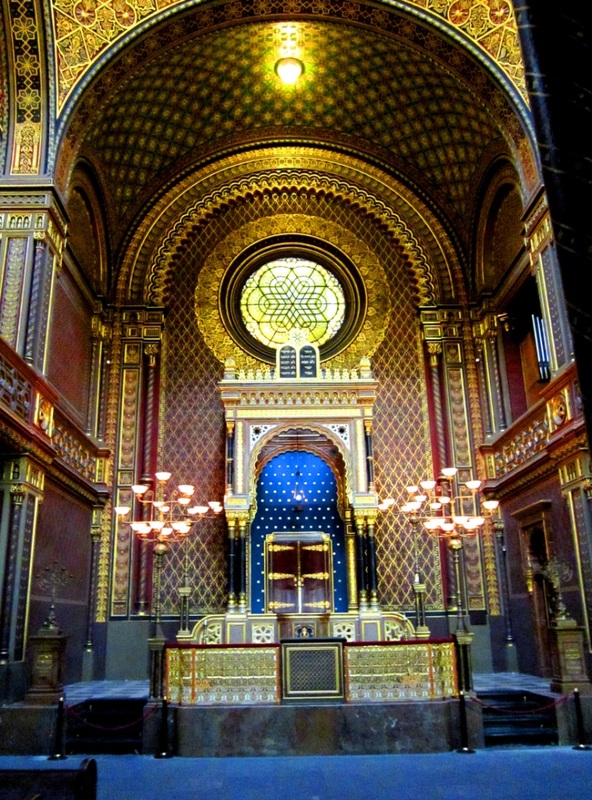 The Spanish Synagogue, constructed in the Moorish revival style and one of the most elaborate buildings of its kind in Europe | 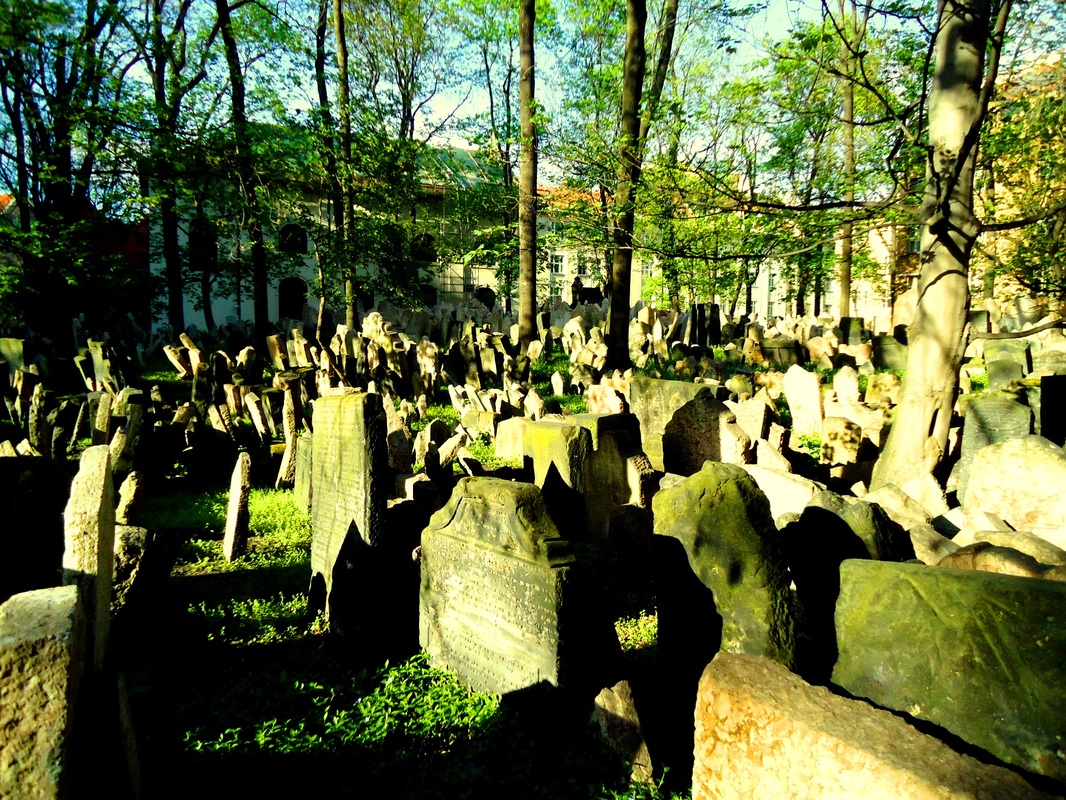 The quiet though somewhat haunting Old Jewish cemetery, the focal point of Josefov and an existing reminder of the horrors of the Holocaust |
A few blocks south and east of the Old Town (Staré Město) is the more modern New Town quarter of Prague (Nové Město). Centered around Wenceslas square (Václavské náměstí), a sloped area lined with nice boutiques, hotels and dining places, this modern area of Prague boasts of more modern architectural styles and nice shopping.
 Spring flowers abound at the center of Vaclavske namesti (St. Wenceslas square), the heart of Nove Mesto (New Town). |  At the top of Vaclavske namesti is the Czech national museum and the statue of St. Wenceslas, an important hero in Czech history. |
Across the bridge, the Lesser Town (Malá Strana) boasts of its own spread of tourist attractions.
 The Bridge Tower on the western end of Charles bridge serves as the entrance to Mala Strana. | 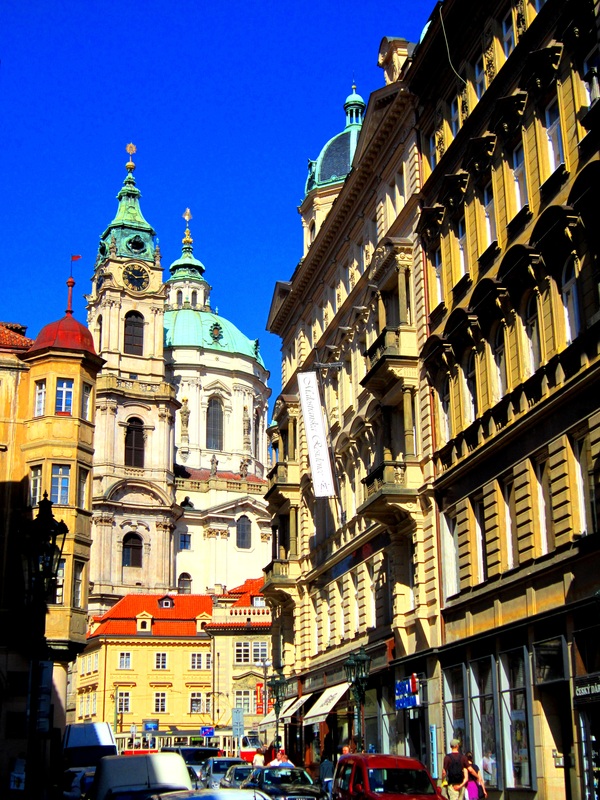 Church of St. Nicolas, at the heart of Mala Strana (not to be confused with a similarly styled and named church at Stare Mesto). | 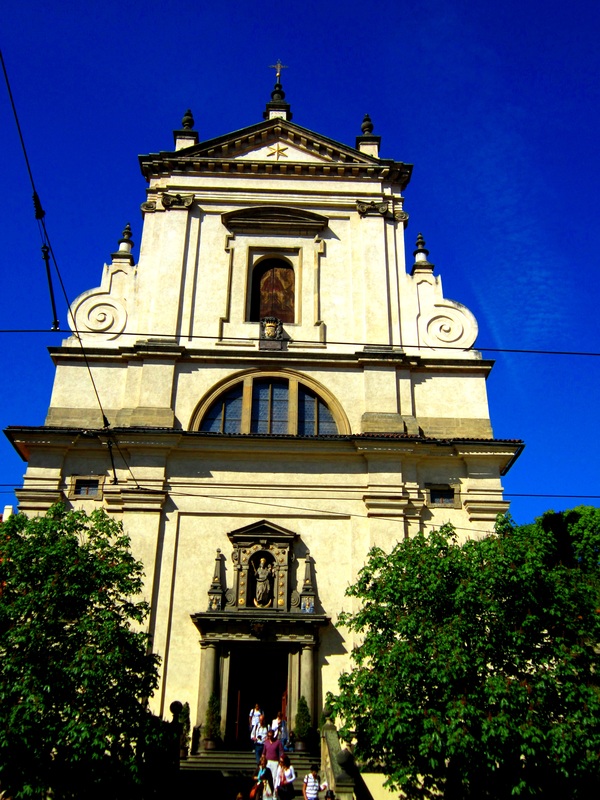 The unassuming facade of the Church of Our Lady Victorious - run by Carmelite nuns, this church houses the famous Infant Jesus of Prague wax statue. |
Clearly, however, the main reason for most to crossover into the western bank of the Vltava is to climb up the hill to the Prague Castle (Pražský hrad). Held to be the biggest castle in the world (by the Guinness book of world records), the castle district houses not just palace buildings but also the St. Vitus Cathedral (Katedrála svatého Víta), the biggest and most important church in the country and a stand-out example of Gothic architecture.
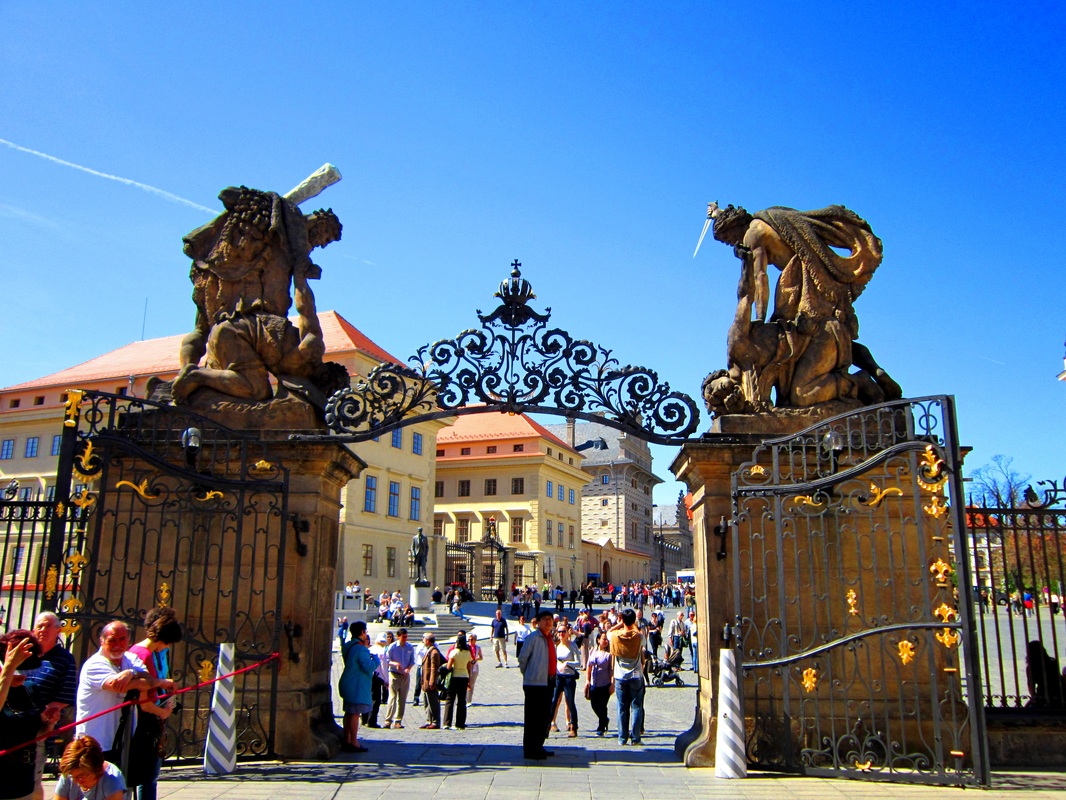 Gates of the Prague Castle (Prazsky hrad) open up to the town square of the Castle District (Hradčany) | 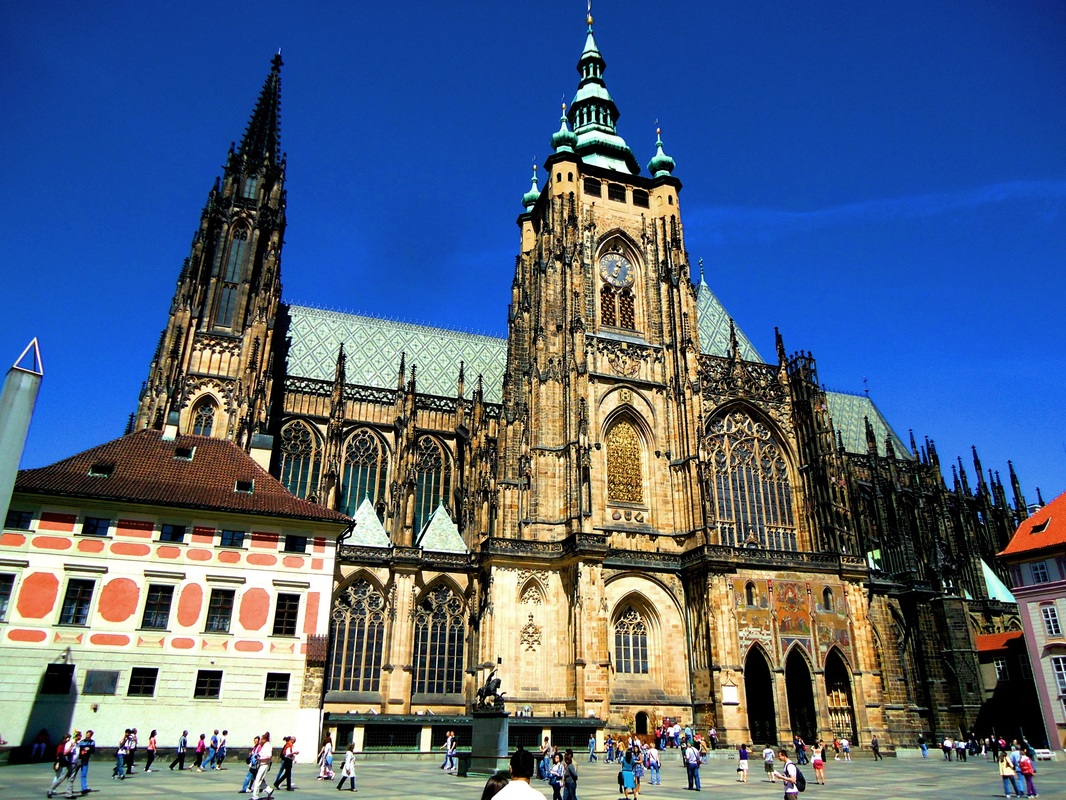 View of the magnificent St. Vitus Cathedral, built largely in the Late Gothic style (though the main tower show hear the center was finished with the Baroque style) |
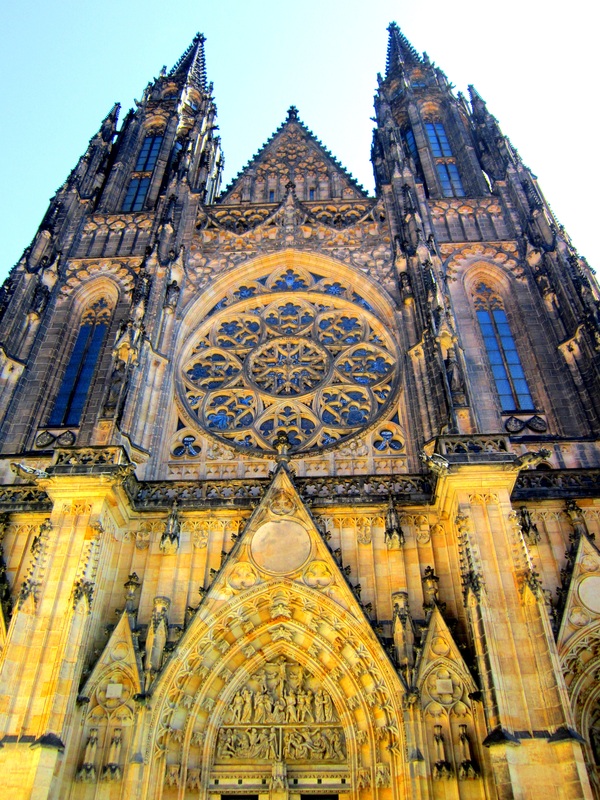 Imposing facade of St. Vitus cathedral, built in Gothic style from an earlier Romanesque church when the Prague bishopric was raised into an archbishopric |  Interior of St. Vitus cathedral with features typical of Gothic churches (high vaulted ceilings, Gothic arches and stained glass windows) | 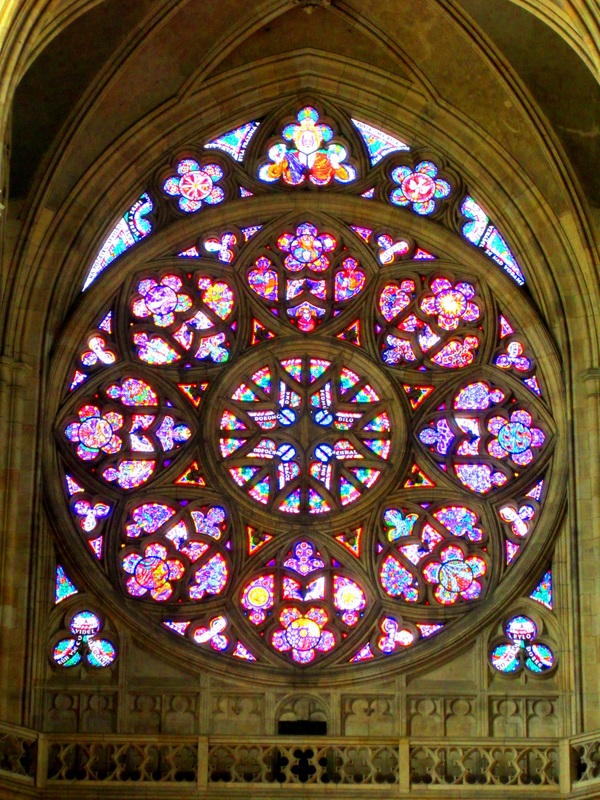 The stained glass rose window at the western side of St. Vitus cathedral; the Late Gothic style of the cathedral has been influential all over Central Europe |
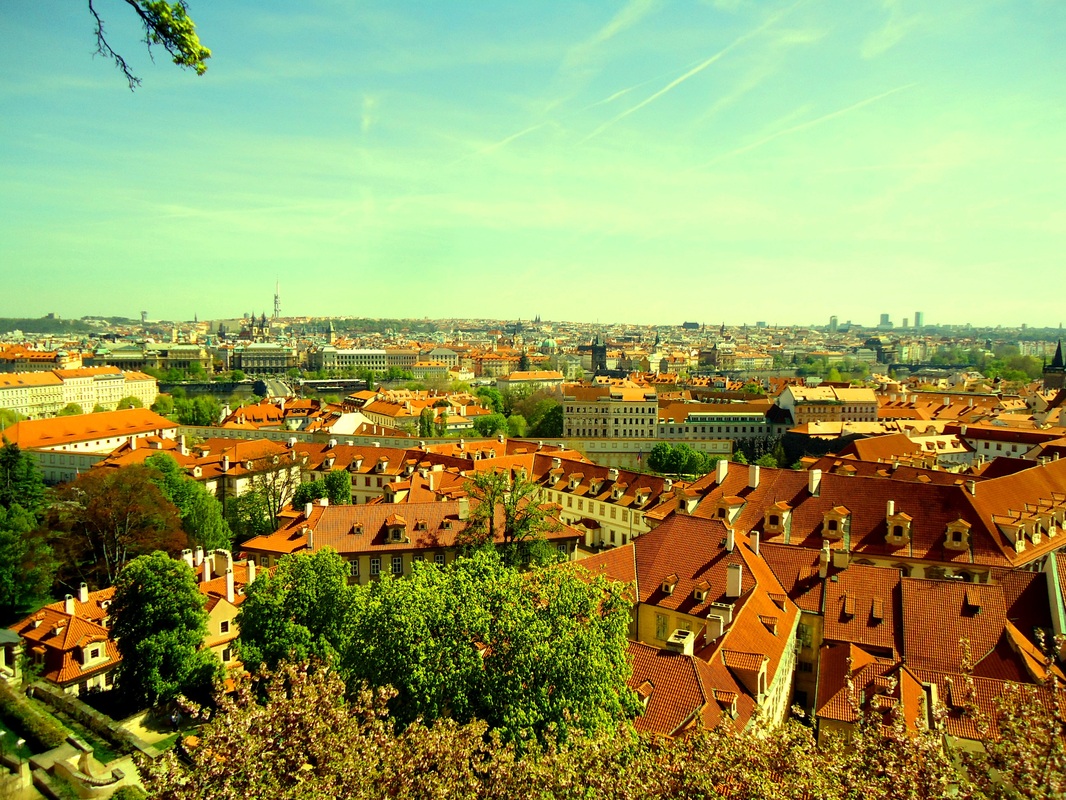 View of Stare Mesto (Old Town) from Hradcany (Castle Hill) | 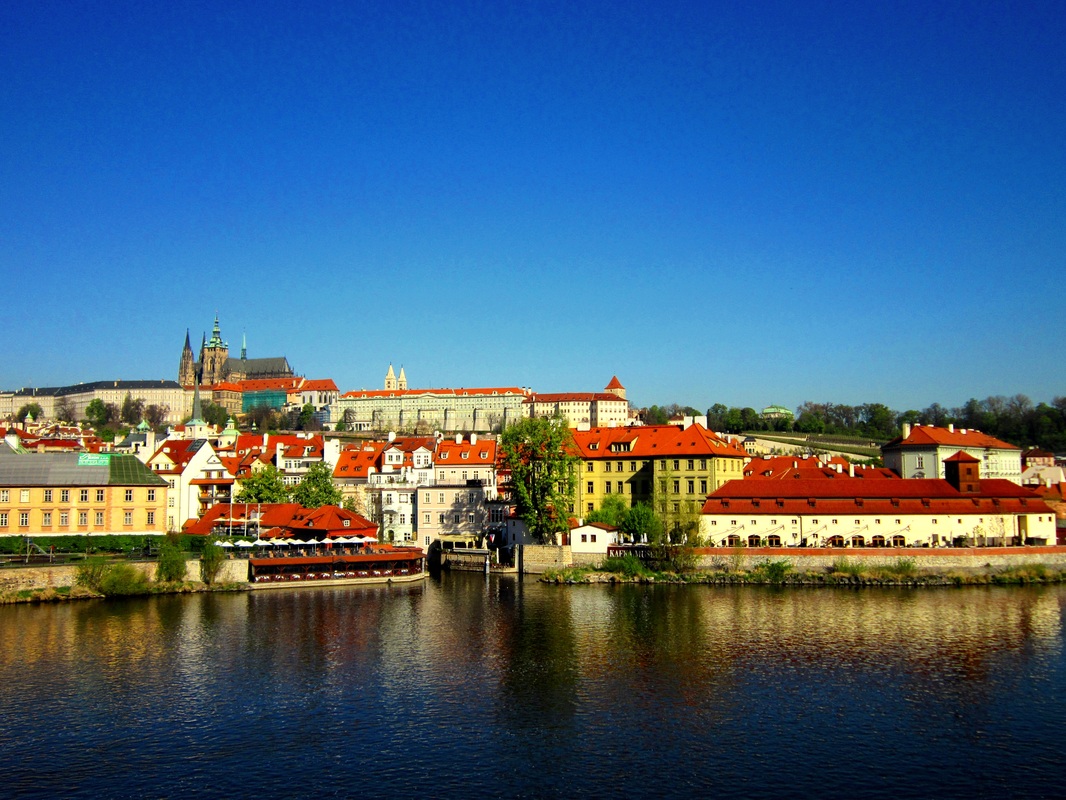 View of Hradcany (Castle Hill) from Charles Bridge (Karlov Most) |
Beyond the tourist sights and the various quarters, however, Prague has an indomitable spirit and Bohemian charm that draws everyone into the city and that makes each visit memorable. While crowded probably most of the year, it's a city which offers a lot to be experienced - the least of which is its vibrant drinking culture (beer or absinthe anyone?); more than enough to let one forgive the noisy tourists and crowded streets.
In my next post, I'll delve more into the other aspects of Prague as well as with my adventures in two other Czech cities (Karlovy Vary, Olomouc). On another post, I'll share my non-expert thoughts on
Czech beer and my first straight-up encounter with the
Green Fairy.



























 RSS Feed
RSS Feed